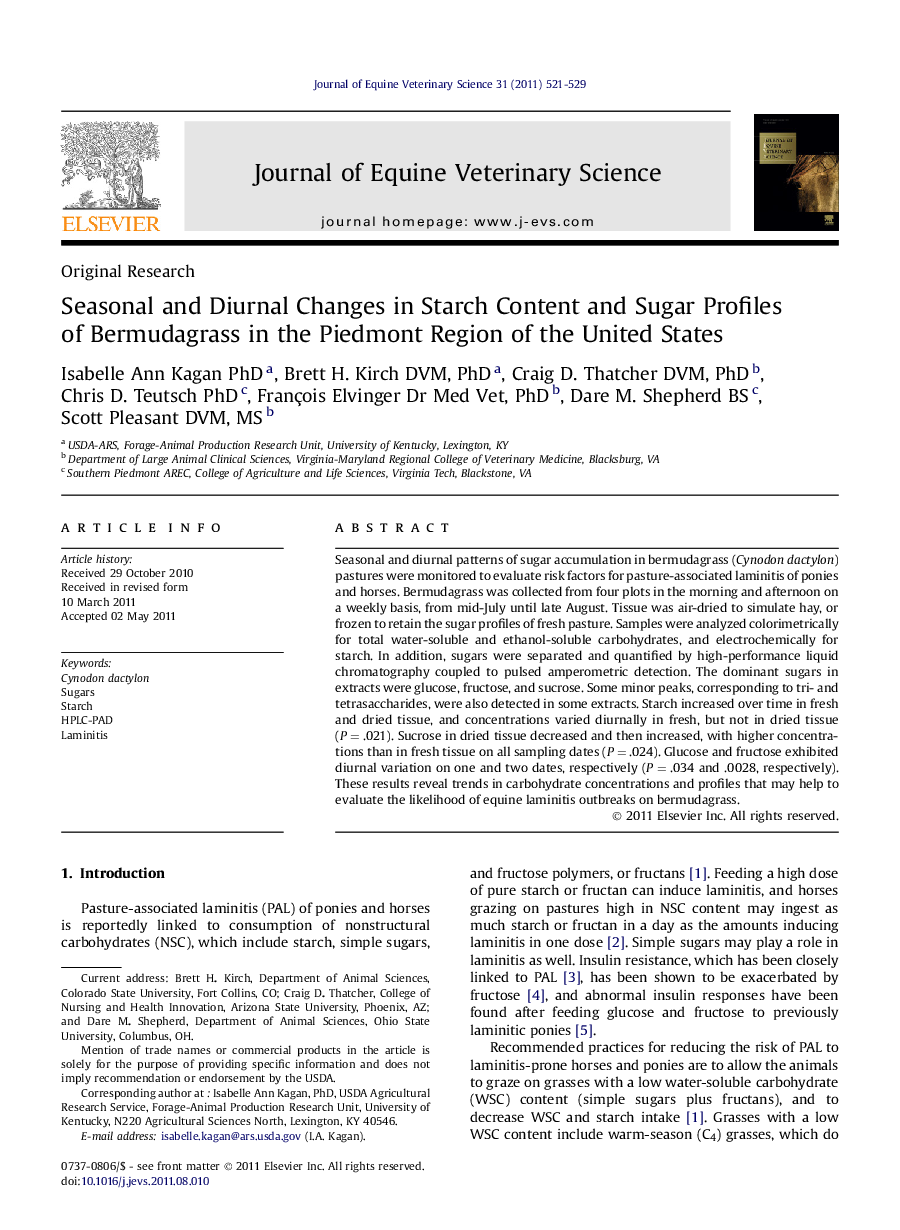| کد مقاله | کد نشریه | سال انتشار | مقاله انگلیسی | نسخه تمام متن |
|---|---|---|---|---|
| 2395742 | 1101581 | 2011 | 9 صفحه PDF | دانلود رایگان |

Seasonal and diurnal patterns of sugar accumulation in bermudagrass (Cynodon dactylon) pastures were monitored to evaluate risk factors for pasture-associated laminitis of ponies and horses. Bermudagrass was collected from four plots in the morning and afternoon on a weekly basis, from mid-July until late August. Tissue was air-dried to simulate hay, or frozen to retain the sugar profiles of fresh pasture. Samples were analyzed colorimetrically for total water-soluble and ethanol-soluble carbohydrates, and electrochemically for starch. In addition, sugars were separated and quantified by high-performance liquid chromatography coupled to pulsed amperometric detection. The dominant sugars in extracts were glucose, fructose, and sucrose. Some minor peaks, corresponding to tri- and tetrasaccharides, were also detected in some extracts. Starch increased over time in fresh and dried tissue, and concentrations varied diurnally in fresh, but not in dried tissue (P = .021). Sucrose in dried tissue decreased and then increased, with higher concentrations than in fresh tissue on all sampling dates (P = .024). Glucose and fructose exhibited diurnal variation on one and two dates, respectively (P = .034 and .0028, respectively). These results reveal trends in carbohydrate concentrations and profiles that may help to evaluate the likelihood of equine laminitis outbreaks on bermudagrass.
Journal: Journal of Equine Veterinary Science - Volume 31, Issue 9, September 2011, Pages 521–529